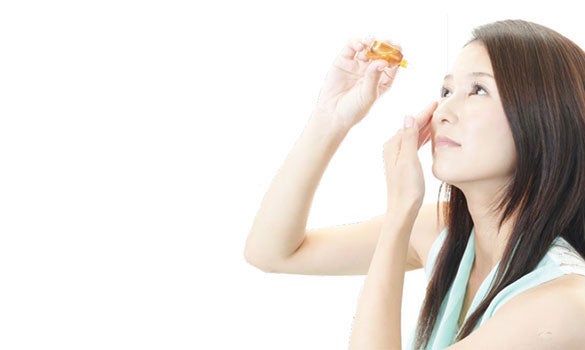
dry eye patients need a holistic management.
Dry Eye Syndrome (DES)
Original title: More than Meets the Eye
Aside from lubricants, dry eye patients need a holistic management
Dry Eye Syndrome (DES) is a prevalent ophthalmic condition adversely affecting up to 80 per cent of the population over the age of 80. It has potential debilitating effects on specific segments of the population such as contact lens wearers, postmenopausal women, and patients who have undergone refractive surgeries or who suffer from autoimmune disorders.
Patients are likely to have the symptoms but not all will be aware that they are suffering from dry eyes. That is because dry eye symptoms may be as varied as dryness, redness, heavy eyelids, blurry vision, grittiness, watery eyes, discomfort in air-conditioned places and tiredness following prolonged visual tasks.
Assoc Prof Louis Tong, Senior Consultant, Corneal and External Eye Disease Service, Singapore National Eye Centre (SNEC) and his team studied more than 3,000 participants who were given standardised questionnaires and clinical examinations, which revealed that about half the Malay population in Singapore have meibomian gland dysfunction, a cause of symptomatic dry eyes. The study also found that people with dry eyes have more difficulty with daily tasks such as recognising friends, reading road signs and driving at night than those who did not.
The dry eye study was done as part of the Singapore Malay Eye Study, with similar studies on Singapore Chinese and Indians still being analysed. Assoc Prof Tong, who is also a clinical scientist at Singapore Eye Research Institute, said he would not be surprised if the findings of all races are similar. This urges the need for primary care providers to take a vested approach in treating this condition as it is highly prevalent in the local Asian population and heavily affects the patient’s quality of life.
Once a patient is identified with dry eye, primary care physicians should take a holistic approach in managing these patients as the condition can often only be controlled rather than cured, and patients need to develop realistic expectations from the treatment, believes Assoc Prof Tong.
In a review article in the Proceedings of Singapore Healthcare, Assoc Prof Tong gives a breakdown of the benefits and limitations of the various over-the-counter lubricants which is the mainstay first line treatment for dry eye. He also highlights the importance of minimising lifestyle triggers such as contact lens wear, smoking and alcohol consumption as well as spending less time in air-conditioned or dry places. Poor sleep is also associated with dry eyes.
When recommending topically-administered lubricants, because there is a wide range in the market, each differing in viscosity, osmolarity, pH and presence of preservative, a ‘trialand- error’ approach may be necessary to find one that is most suited for a patient. Recalcitrant cases where symptoms don’t improve however should be referred to an ophthalmologist.
“General practitioners should also be on the lookout for and refer patients with common systemic illnesses that could worsen dry eye. Red flags such as an acute history, persistent/profound visual loss and associated diplopia should also be referred,” said Assoc Prof Tong. Primary care physicians are actually best placed to ensure patient compliance in using the lubricants, added Assoc Prof Tong.
“They can advise patients to continue the drops to alleviate the symptoms, and explain to them that the drops do not cure their condition. They can also stock up on preservative- free eye drops if possible as these may cause less irritation and therefore aid compliance.”













 Get it on Google Play
Get it on Google Play